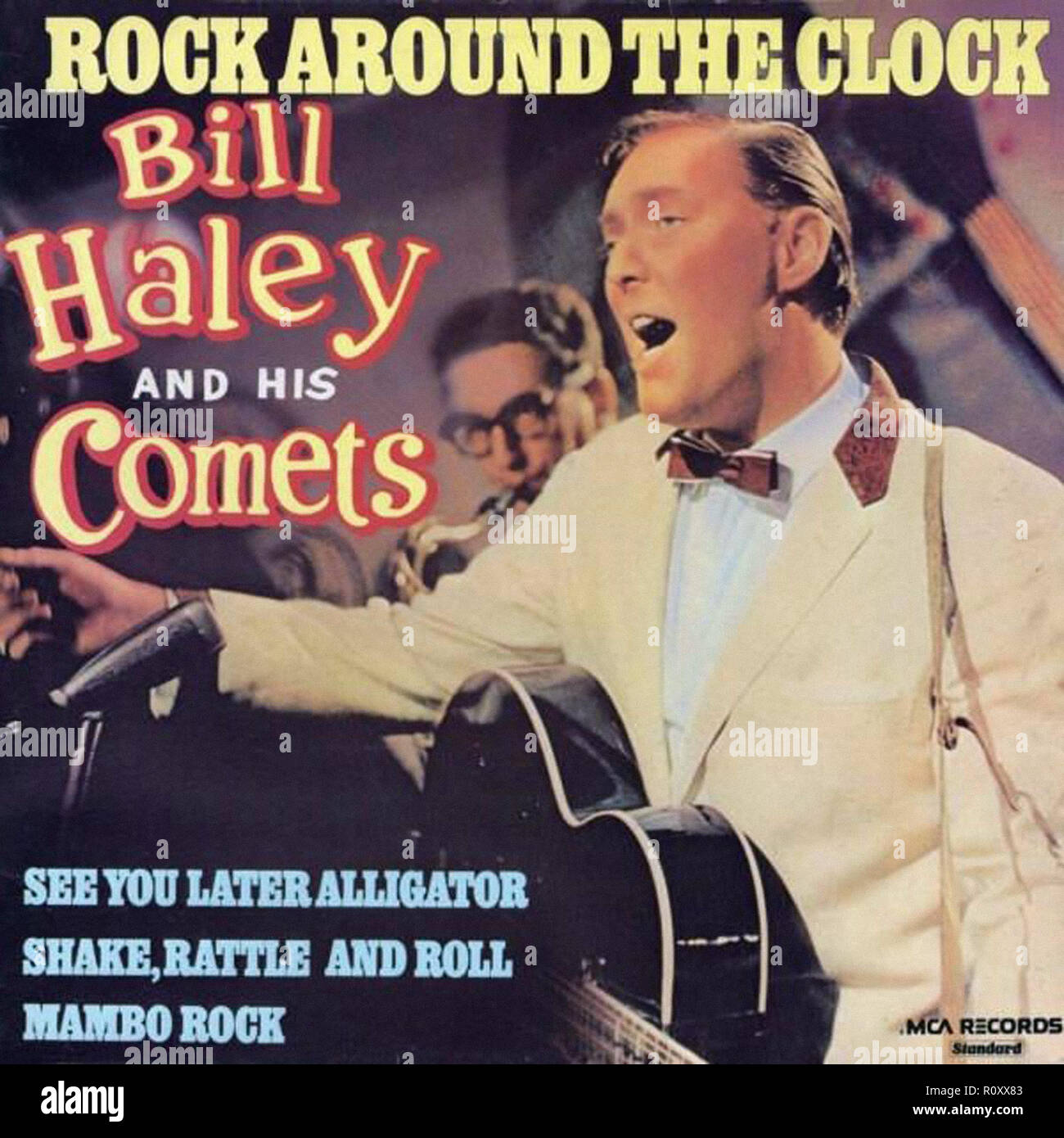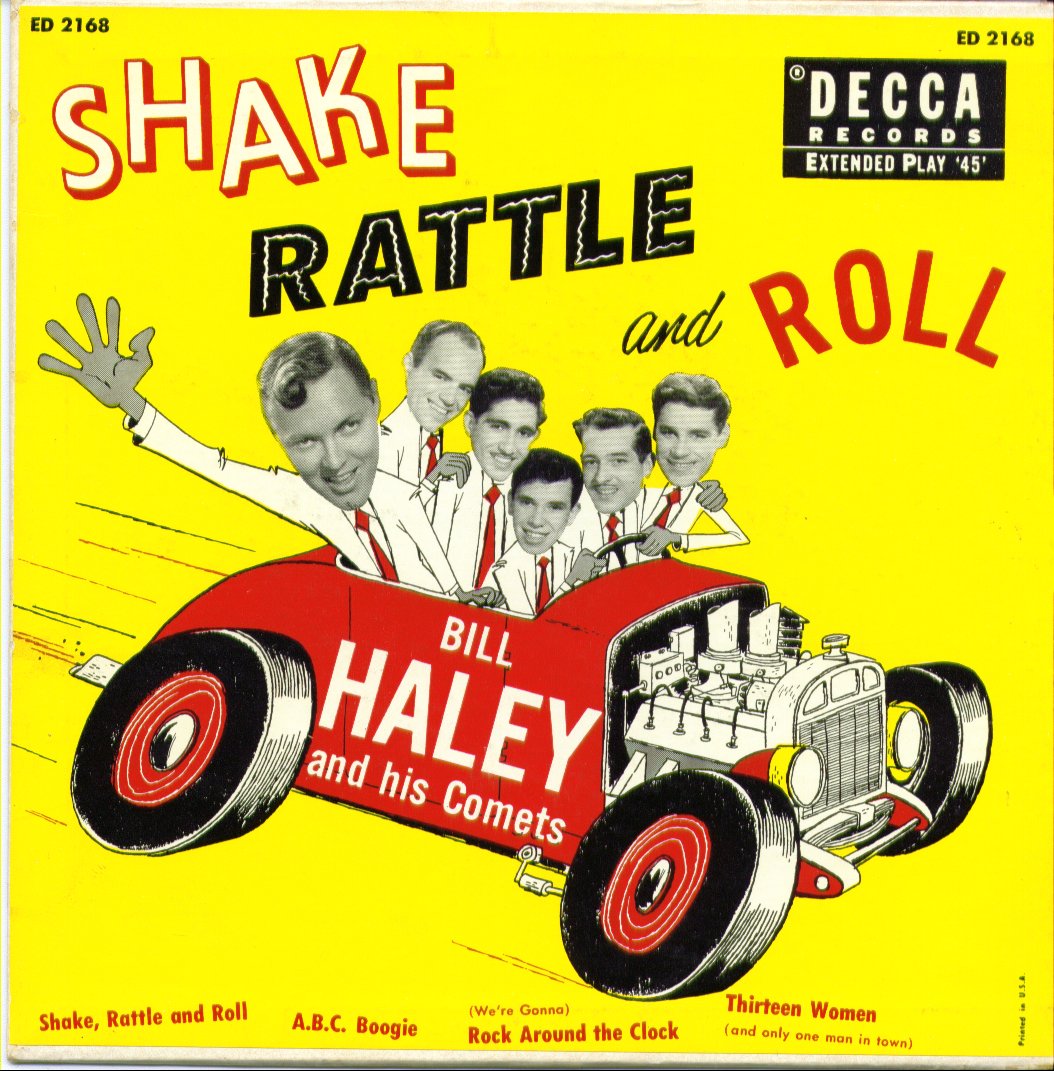
Inspired by the tune's success, Columbia released the film " Rock Around the Clock," which catapulted its title song into the charts in countries around the globe. Decca released the track again in the summer of 1955, this time as an A-side. "Rock Around the Clock" also became a charts smash, staying at number one for over eight weeks. The film hit American theaters on Maand became a hit around the world. Haley had no trouble selling out concerts in the 50s Image: picture-alliance/Mary Evans Picture Library The filmmaker quickly recognized the song's potential.īrookes decided to put "Rock Around the Clock" in his movie, securing the rights from Decca Records for just one dollar.
#BILL HAILEY ROCK AROUND THE CLOCK FULL#
Peter Ford was absolutely mesmerized by Haley's B-side, which he had cranked up full blast. One day, director Richard Brookes, who was working on his film "Blackboard Jungle" about rebellious youth and their understanding teacher, stopped at the house of his star during a break. "Rock Around the Clock" was on the verge of being forgotten, were it not for die-hard Haley fans such as Peter Ford, the son of the famous Hollywood actor Glenn Ford. Radio stations didn't play B-sides at the time. The single's A-side landed at number 23 on the pop charts but soon plummeted. This time, sound technician Larry McIntire just recorded Haley's voice and later mixed it with the first take. There were just 20 minutes of studio time left to repeat the recording. The instruments were drowning out Bill Haley's voice, leaving him sounding too quiet.

In the end, there were just 40 minutes left for two takes of the B-side, the song "Rock Around the Clock." Although it had already been recorded in March by Haley's friend and fellow musician Sonny Dae and his Knights, it belonged to Haley's repertoire, and he insisted on doing his own version.īut on April 12, 1954, something was off. Decca vinyl - a favorite among collectors today Image: Myers Music, Inc., Philadelphia, PA. Most of the time was used for the single's a-side because Haley and the Comets were playing the title track "Thirteen Women" for the very first time. The recording session started two hours late. Lacking another word for it, people spoke of the "Haley sound." It was only later that "rock 'n' roll" came into favor. Meanwhile, though, he had developed a style that was brand new to audiences.

Originally, Bill Haley had made his name as the best yodeler in the United States, then in the country music scene, where he took the stage in a cowboy outfit with his Saddlemen backers. Gabler is said to have roared: Where the hell are they? Why didn't those idiots at least call?īill and his back-up band were stuck on a car ferry that had gotten stranded on a sandbank along the Delaware River. An hour and a half later, there was no sign of the band. A certain Milt Gabler, self-described as a producer, had reserved a huge ballroom in New York to record two songs with Bill Haley and His Comets for their new label, Decca Records.


 0 kommentar(er)
0 kommentar(er)
